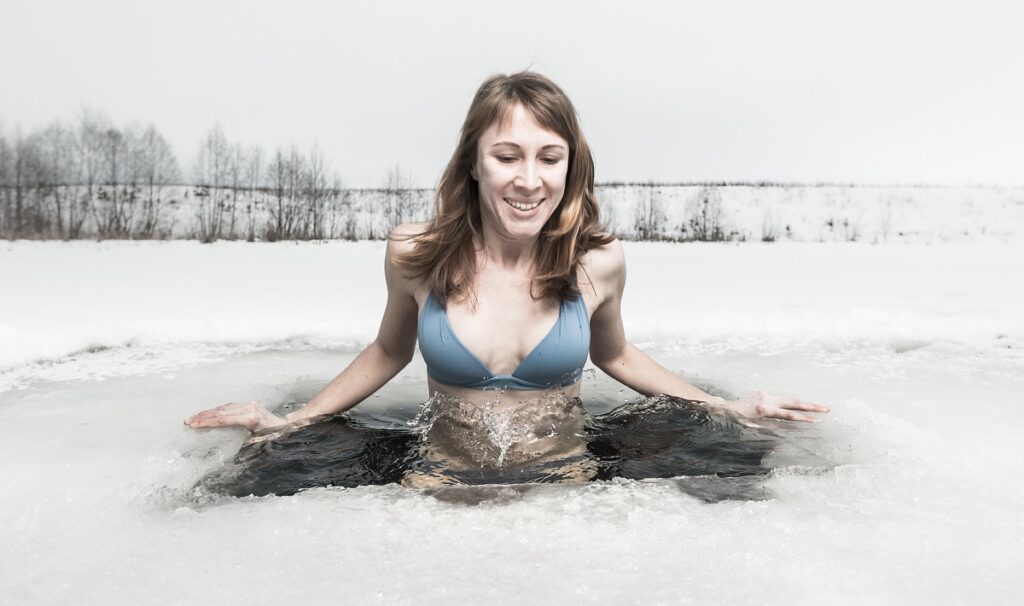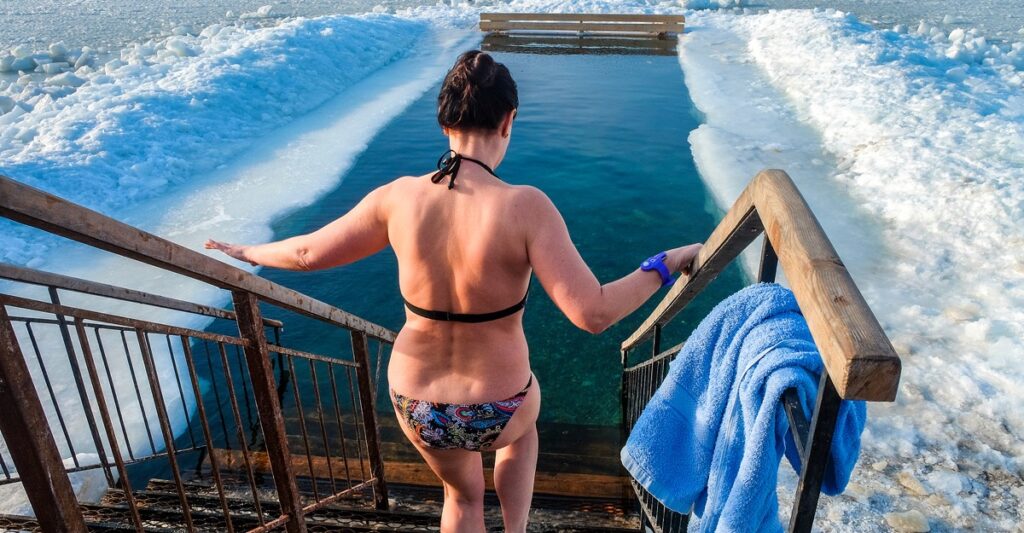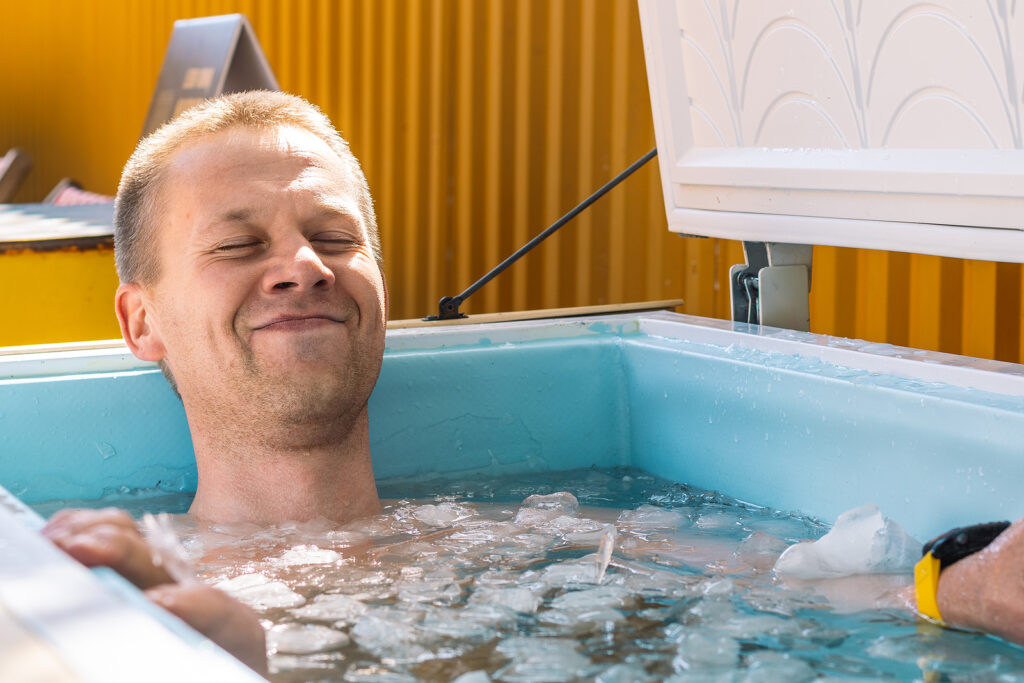What Is a Cold Plunge?
A cold plunge involves immersing the body in cold water, typically around 50 to 60 degrees Fahrenheit. This practice can be done in natural water sources like lakes, rivers, or oceans, or in specially designed tubs or pools. Cold plunging has become increasingly popular due to its association with physical and mental health benefits. Whether you use a commercial cold plunge tub with temperature control or an at-home setup like a repurposed freezer, the practice remains consistent—exposing the body to cold for short durations. People often incorporate cold plunging as part of a recovery routine or wellness ritual. While the setup can vary, the fundamental goal is to tap into the benefits of cold exposure, a practice rooted in ancient traditions but now widely popular in modern wellness circles.
What Are the Benefits of Cold Plunging?
Cold plunging offers a wide range of physical and mental benefits, making it a favorite among athletes, wellness enthusiasts, and even those looking to boost their mental health. Physically, cold plunging can reduce inflammation, improve circulation, and promote muscle recovery after intense exercise. It is also believed to boost the immune system by stimulating the production of white blood cells. Mentally, regular cold plunges can help lower stress levels, improve mood, and enhance mental clarity. Many practitioners claim that the endorphin rush they experience post-plunge helps them feel more energized and focused throughout the day. While the scientific research is still catching up with anecdotal claims, the growing popularity of cold plunging suggests that its perceived benefits resonate with a large audience. Learn more about cold plunge health benefits
How Long Should You Stay in a Cold Plunge?
The duration of a cold plunge depends largely on your experience level and the water temperature. Beginners should start cautiously, with dips lasting no more than 30 seconds to 1 minute. As you become more acclimated, you can gradually increase your time in the water. Experienced cold plungers might stay submerged for 3-5 minutes, though it’s important to note that staying in too long can lead to hypothermia. The key is listening to your body—if you start to feel disoriented, numb, or experience intense shivering, it’s time to get out. Remember, it’s not a contest; the goal is to reap the benefits of cold exposure without putting yourself at risk. For colder water, shorter dips are recommended, while slightly warmer temperatures may allow for longer exposure.
Is Cold Plunging Safe for Everyone?
Cold plunging is generally safe for most healthy individuals, but certain groups should take caution. People with pre-existing heart conditions, poor circulation, or respiratory problems should consult a healthcare provider before attempting cold plunges. The sudden shock of cold water can cause a spike in heart rate and blood pressure, which may be dangerous for individuals with cardiovascular issues. Additionally, if you are prone to cold intolerance or have conditions like Raynaud’s disease, cold plunging may not be ideal. Always begin with shorter durations and gradually build up tolerance. Safety is paramount, so never plunge alone and ensure the environment is controlled—slippery surfaces, deep water, or extreme cold temperatures can increase risks. For those with health concerns, it’s always best to consult a professional before incorporating cold plunging into their routine.
Learn more about if cold plunging is safe
How Often Should You Do a Cold Plunge?
The frequency of cold plunging depends on your goals and how your body responds to the practice. Some people enjoy daily cold plunges as part of their routine, while others find that 2-3 times per week is sufficient to experience the benefits. Beginners might start with once a week to allow their body to adjust to the cold exposure before increasing frequency. Over time, as your body becomes more acclimated, you can increase how often you plunge without experiencing excessive fatigue or strain. However, it’s important to listen to your body—overdoing cold plunging can lead to prolonged cold exposure symptoms like fatigue, sluggishness, or feeling cold even when not plunging. Whether you’re aiming for physical recovery or mental resilience, consistency over time tends to yield the best results.
What Should You Do Before and After a Cold Plunge?
Before plunging, it’s essential to prepare both mentally and physically. Start by taking deep, slow breaths to calm your mind and steady your breathing, as the initial shock of cold water can cause a gasping reflex. Mentally prepare for the cold by focusing on the benefits and staying positive. After the plunge, avoid jumping straight into a hot shower. Instead, dry off and warm up slowly—this helps your body transition back to normal temperature without shocking your system. Layering up with warm clothes, drinking hot tea, or engaging in light physical activity like walking or stretching can help. Hydrating after a plunge is also crucial, as cold exposure can dehydrate the body. These steps ensure that your cold plunge experience is both effective and safe.
Does Cold Plunging Help with Muscle Recovery?
Yes, cold plunging can be an excellent tool for muscle recovery. After intense physical activity, muscles often become inflamed due to microtears in the fibers. Cold exposure reduces blood flow to the muscles, which helps decrease inflammation and swelling. Athletes have long used ice baths for this purpose, and cold plunging offers similar benefits but with a more immersive experience. Cold plunging is particularly effective for reducing delayed onset muscle soreness (DOMS), which occurs after strenuous exercise. Some studies suggest that cold exposure can also enhance recovery by flushing out lactic acid and improving circulation when you warm back up. If you’re using cold plunging as part of a recovery routine, it can be an effective way to speed up healing and get you back to training faster.
Can Cold Plunging Improve Mental Health?
Many people turn to cold plunging for its mental health benefits. Cold exposure stimulates the release of endorphins and norepinephrine, which are chemicals that enhance mood and alertness. Regular cold plunging can help reduce stress, anxiety, and even symptoms of depression. It encourages mindfulness as the intensity of the cold forces you to focus on your breathing and remain present in the moment. This “shock to the system” can lead to feelings of calm and clarity afterward. Cold plunging is also linked to better sleep patterns, as it helps regulate circadian rhythms. While it’s not a substitute for professional mental health treatment, many enthusiasts claim that cold plunging significantly boosts their mental well-being, giving them a sense of accomplishment and resilience. Learn more about cold plunging and mental health.
What Are the Different Types of Cold Plunges?
Cold plunges can take many forms, depending on your preference and access to equipment. Some people use natural bodies of water, such as lakes, rivers, or the ocean, which offer a raw and invigorating cold plunge experience. Others prefer at-home setups, which can range from modified freezers to stock tanks filled with ice water. For those looking for a more controlled environment, there are specialized cold plunge tubs available, some equipped with temperature regulation to keep the water consistently cold. Wellness centers and spas may also offer cold plunge pools as part of their services, often combined with saunas for a hot-cold therapy experience. Each type of cold plunge has its advantages, and your choice depends on your goals, access to resources, and comfort level.
What Should You Wear During a Cold Plunge?
What you wear during a cold plunge depends on your personal comfort and the setting. In private settings, some people opt to plunge without any clothing to maximize the cold exposure, while others prefer to wear a swimsuit. If you’re plunging outdoors, water shoes may be a good idea to protect your feet from sharp rocks or cold surfaces. In colder climates, some individuals wear a beanie (a knitted hat) to keep their head warm, as losing too much heat from your head can make the experience uncomfortable. Whatever you choose to wear, make sure it’s comfortable and allows you to move easily in the water. Quick-drying fabrics like polyester or nylon work well, as they won’t stay wet for too long after your plunge.
Are There Cultural or Historical Cold Plunge Traditions?
Cold plunging has a rich history in many cultures around the world. In Scandinavian countries, cold water immersion is a long-standing tradition, often paired with sauna sessions. The practice, known as “sauna and dip,” involves alternating between the heat of the sauna and the cold shock of natural water or cold plunge pools. In Russia, cold water immersion during winter months, sometimes called “ice swimming,” is popular as a way to boost health and resilience. Japan also has a tradition of cold water immersion, particularly in the form of “misogi,” a Shinto purification ritual involving standing under cold waterfalls. These cultural practices have influenced the modern cold plunge movement, which continues to grow in popularity for its mental and physical benefits.
Can Cold Plunges Help with Weight Loss?
Cold plunging has been associated with weight loss, though it should not be seen as a quick fix. The body burns calories when exposed to cold temperatures, as it needs to generate heat to maintain core body temperature. This process, known as cold-induced thermogenesis, can lead to the burning of brown fat, a type of fat that generates heat. While cold plunging alone is unlikely to cause significant weight loss, it can complement a healthy diet and regular exercise routine. Some studies suggest that regular cold exposure can slightly boost metabolism, but it’s important to have realistic expectations. Cold plunging should be viewed as a wellness practice with numerous benefits, and any weight loss experienced should be seen as a bonus, not the primary goal. Read more about cold plunging for weight loss.
What Are the Signs That You Should Stop Cold Plunging?
Knowing when to exit the cold plunge is crucial to prevent overexposure and hypothermia. Common signs that it’s time to stop include intense shivering, numbness in extremities, dizziness, and difficulty coordinating movement. If you start feeling disoriented or notice your skin turning pale or blue, it’s important to get out of the water immediately. Overexposure to cold can lead to hypothermia, a dangerous condition that occurs when the body’s core temperature drops too low. Always listen to your body—if the cold becomes unbearable or you feel unsafe, it’s better to exit early. It’s also important to have a plan for warming up afterward to prevent prolonged cold exposure symptoms. Staying safe and knowing your limits ensures that cold plunging remains a beneficial practice. Read more about when you should stop cold plunging.


